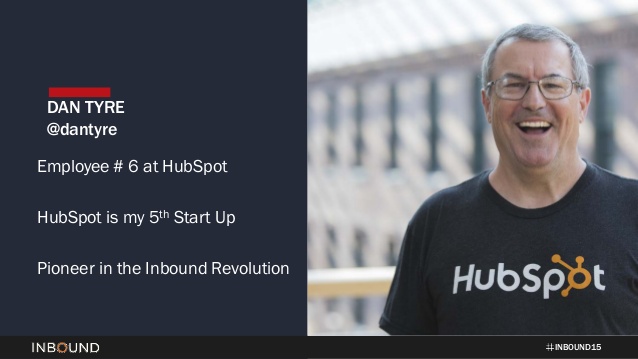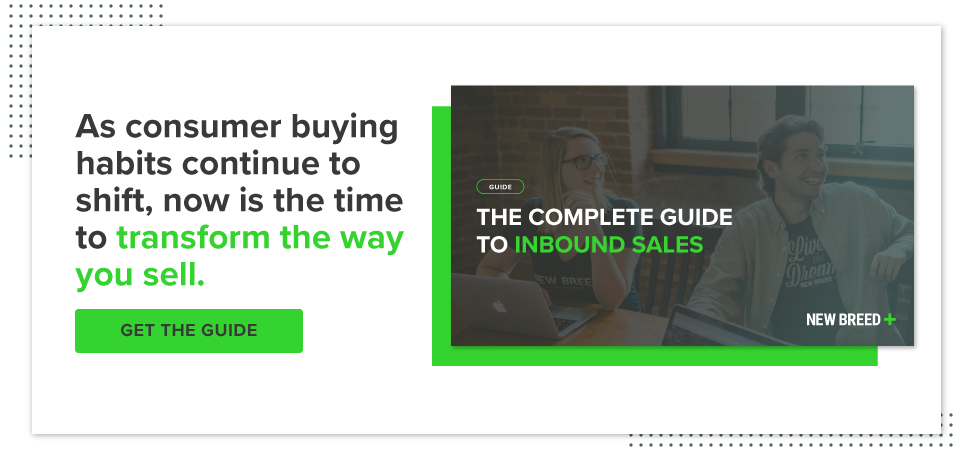5 Lessons Learned from Dan Tyre's Pipeline Generation Bootcamp

Our sales team had the pleasure of hosting Dan Tyre (the most senior sales coach at HubSpot — maybe the world — and co-author of Inbound Organization) and Barrett King (Principal Agency Partner Manager and our HubSpot sales consultant) in our office for the kickoff of our Pipeline Generation Bootcamp training. Dan Tyre's Pipeline Generation Bootcamp is an eight-week program tailored for HubSpot partners who want to learn new skills, connect with more prospects, generate more opportunities and, ultimately, close more deals. We had the honor of training in-person with Dan and Barrett during our first bootcamp session. Here are five of our lessons learned.
1. Identify Your Personal Motivation
Different people are motivated in different ways. As a salesperson, it can be hard to hop on phone call after phone call — especially if your prospects aren't engaged or interested. How do you keep yourself motivated to keep pushing to find your next opportunity and customer? Think back to a time when your emails weren't being opened and your voicemails were being ignored. How did you find it in yourself to get back on track? Maybe you were motivated by the thrill of the sale, helping your prospects, competing with your teammates or growing your commission. Whatever it was, find the underlying vision that motivates you, hold on to it and use it to propel yourself to success.
Once you've identified your personal motivation, put it everywhere. Write it down, put it on your phone's lock screen, make it your home screen and tell everyone about it. According to Dan Tyre, "You are what you feed your brain," so to stay focused and accountable, you need to keep your motivation front and center.
2. Create a Vision Board
Yes, this one might sound crazy, but vision boards seriously work. Our CEO swears by them and is the perfect example of how vision boarding can help you reach your goals. He recently had to remake his vision board because he had achieved everything on it. He visualized everything he wanted to accomplish, laid it all out in front of him and slowly took steps toward making it happen.
To get started with your own vision board, take your newly discovered motivations and visualize everything you want to make happen with them. Nothing is too big or too small — if you really want it, put it on your board. If you are what you feed your brain, then putting your dreams in front of you will subconsciously feed your brain and help to motivate you into your personal success. Even on your hardest day, you will be reminded about your long-term vision and be inspired to take the necessary steps to achieving it.
3. Take a Personality Assessment
Dan Tyre had our team take the DISC assessment, which stands for Dominance, Influence, Steadiness and Conscientiousness. This assessment gave us insight into ourselves and how we best interact with others based on the trait we ranked for the most. By providing each of us with a common understanding of our personalities, the DISC assessment helps improve conflict management, build lasting working relationships and develop stronger sales skills.
A personality assessment, such as the DISC, can help you develop stronger sales skills for several reasons:
- Learn what your personality type is and how you engage with others.
- Help identify what your prospect's personality type is and how they want to engage with you.
By understanding your prospect's personality type, you can change the way you communicate with them to match their personality type. They'll feel like you're reading their mind in your approach to them and you will have the benefit of better helping and understanding them. It may be difficult to adopt new methods at first, but as you continue experimenting, you'll develop stronger, more well-rounded communication skills and be able to sell to anyone in your database.
4. Adopt a Give and Get Approach
The era of "always be closing" is officially over and it's time to approach sales with an "always be helping" mindset instead. Inbound marketing was founded on this idea and your sales approach should be no different. When interacting with prospects, you can give them something of a value (such as a helpful tip) and then ask for something of value in return (answers to your questions). When you build trust and demonstrate your value by giving first, you encourage a more open and productive conversation.
However, try not to give too much or for too long. Try to immediately follow your tip with a relevant question that guides the rest of the conversation. For example:
- If you notice their calls to action aren't effective, give a suggestion for how they can improve and then steer the conversation to the rest of their lead generation efforts.
- If they're not blogging regularly, explain the importance of a quality blogging strategy and lead into their content creation goals and overall attitude toward these efforts.
Instead of diving right into the nitty gritty questions, these tiny bits of advice build your own authority and show prospects how you can benefit them and their business.
5. Incorporate Social Selling
Your prospects live online. So why aren't you meeting them where they are and connecting with them online? They're posting, liking, sharing, commenting and offering you plenty of opportunities for further engagement. Now, I'm not suggesting you hop onto LinkedIn and send them the same messages you've been sending via phone and email. On social media, you need to be engaging authentically, but you still need to be engaging.
In the 21st century, social selling needs to become another step in your process. Look up your prospects on Facebook, Twitter and LinkedIn while enriching their contact record. Connect with them after your first conversation. Share content that helps them solve a problem or overcome a challenge. Interact with their content and give additional tips and insight. Don't be overwhelming, but be human.
Key Takeaway
Just as inbound marketing altered our approach to leads, it's time to adopt an inbound sales process and alter your approach to prospects. In fact, the number one attribute people look for in a salesperson is good listening. Humans are social beings who don't want to be constantly sold to — they want to have genuine conversations and interactions where they feel heard. By uncovering your key motivator, building a vision board, taking a personality assessment, adopting an "always be helping" mindset and incorporating authentic selling, you can give your entire sales process a much-needed facelift.
These lessons set you up for the ability to reconsider your entire approach to sales and bring it into the 21st century where conversation is king. Now that you have the basics, evaluate from your connect call all the way down to your closed-won call. How are you communicating at each stage? And is it resonating with your prospects?





